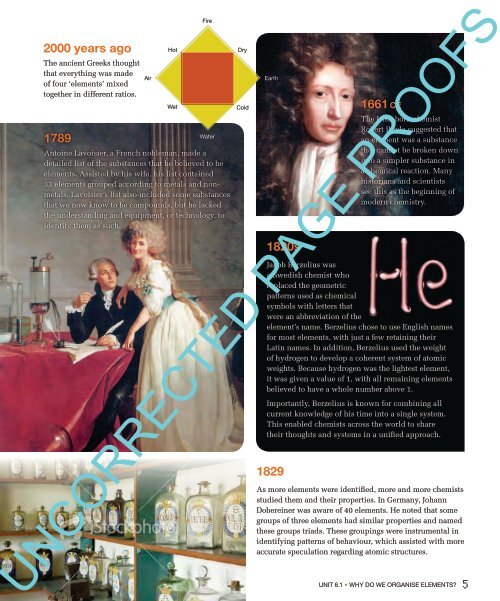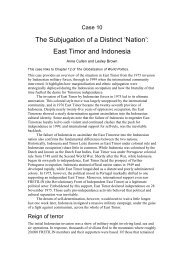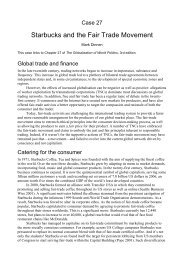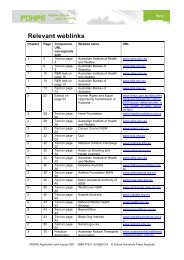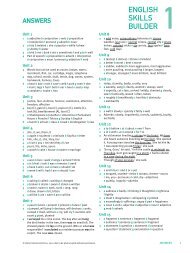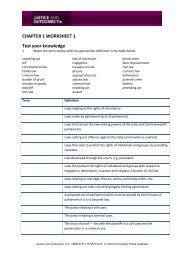2 Chapter 6 ⢠organising elements Organising elements
2 Chapter 6 ⢠organising elements Organising elements
2 Chapter 6 ⢠organising elements Organising elements
You also want an ePaper? Increase the reach of your titles
YUMPU automatically turns print PDFs into web optimized ePapers that Google loves.
2000 years ago<br />
The ancient Greeks thought<br />
that everything was made<br />
of four ‘<strong>elements</strong>’ mixed<br />
together in different ratios.<br />
1789<br />
Air<br />
Hot<br />
Wet<br />
Fire<br />
Water<br />
Antoine Lavoisier, a French nobleman, made a<br />
detailed list of the substances that he believed to be<br />
<strong>elements</strong>. Assisted by his wife, his list contained<br />
33 <strong>elements</strong> grouped according to metals and nonmetals.<br />
Lavoisier’s list also included some substances<br />
that we now know to be compounds, but he lacked<br />
the understanding and equipment, or technology, to<br />
identify them as such.<br />
Dry<br />
Cold<br />
Earth<br />
1820s<br />
1829<br />
1661 ce<br />
The Irish-born chemist<br />
Robert Boyle suggested that<br />
an element was a substance<br />
that cannot be broken down<br />
into a simpler substance in<br />
a chemical reaction. Many<br />
historians and scientists<br />
see this as the beginning of<br />
modern chemistry.<br />
Jakob Berzelius was<br />
a Swedish chemist who<br />
replaced the geometric<br />
patterns used as chemical<br />
symbols with letters that<br />
were an abbreviation of the<br />
element’s name. Berzelius chose to use English names<br />
for most <strong>elements</strong>, with just a few retaining their<br />
Latin names. In addition, Berzelius used the weight<br />
of hydrogen to develop a coherent system of atomic<br />
weights. Because hydrogen was the lightest element,<br />
it was given a value of 1, with all remaining <strong>elements</strong><br />
believed to have a whole number above 1.<br />
Importantly, Berzelius is known for combining all<br />
current knowledge of his time into a single system.<br />
This enabled chemists across the world to share<br />
their thoughts and systems in a unified approach.<br />
As more <strong>elements</strong> were identified, more and more chemists<br />
studied them and their properties. In Germany, Johann<br />
Dobereiner was aware of 40 <strong>elements</strong>. He noted that some<br />
groups of three <strong>elements</strong> had similar properties and named<br />
these groups triads. These groupings were instrumental in<br />
identifying patterns of behaviour, which assisted with more<br />
accurate speculation regarding atomic structures.<br />
UNCORRECTED PAGE PROOFS<br />
Unit 6.1 • Why do we organise <strong>elements</strong>? 5<br />
CAS_SB10_TXT_06_1pp.indd 5<br />
11/11/11 4:58 PM


